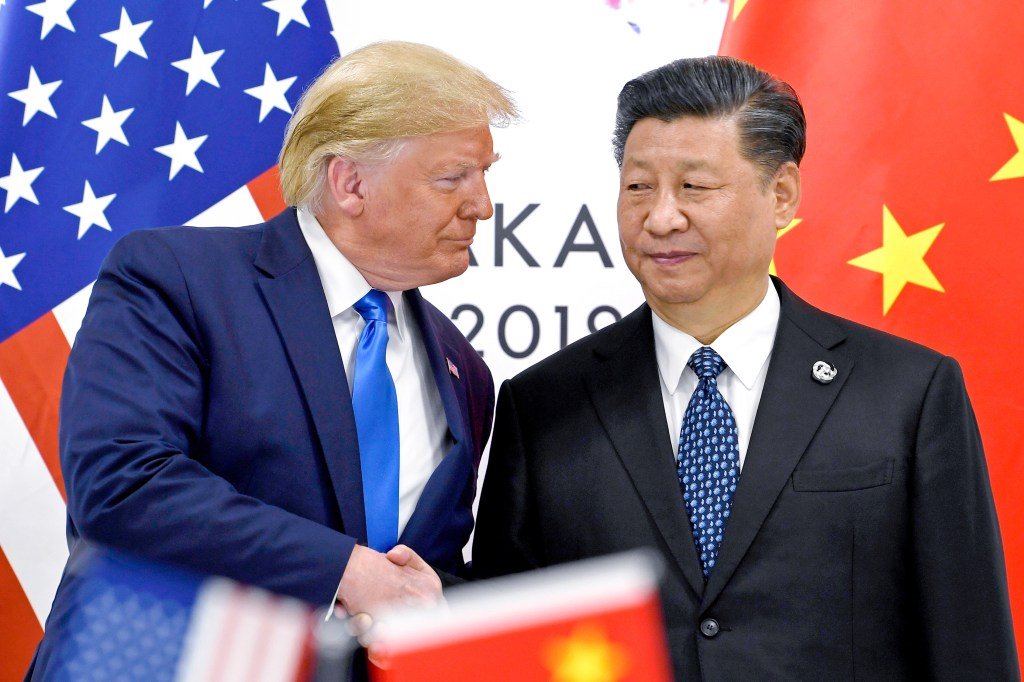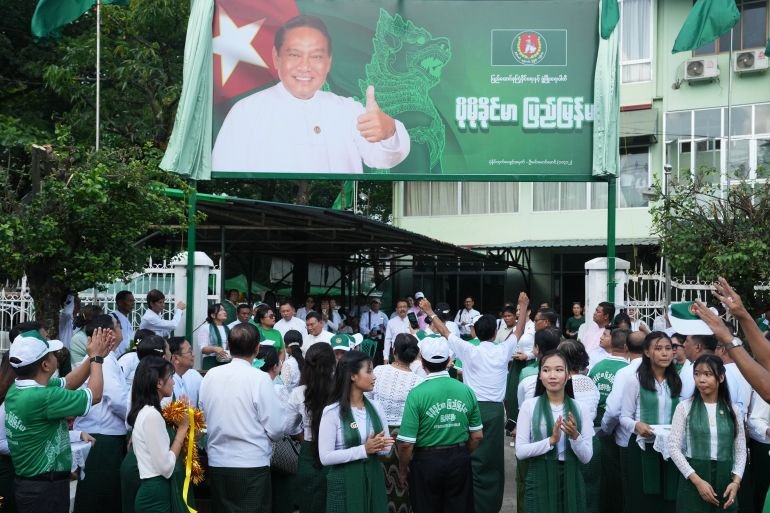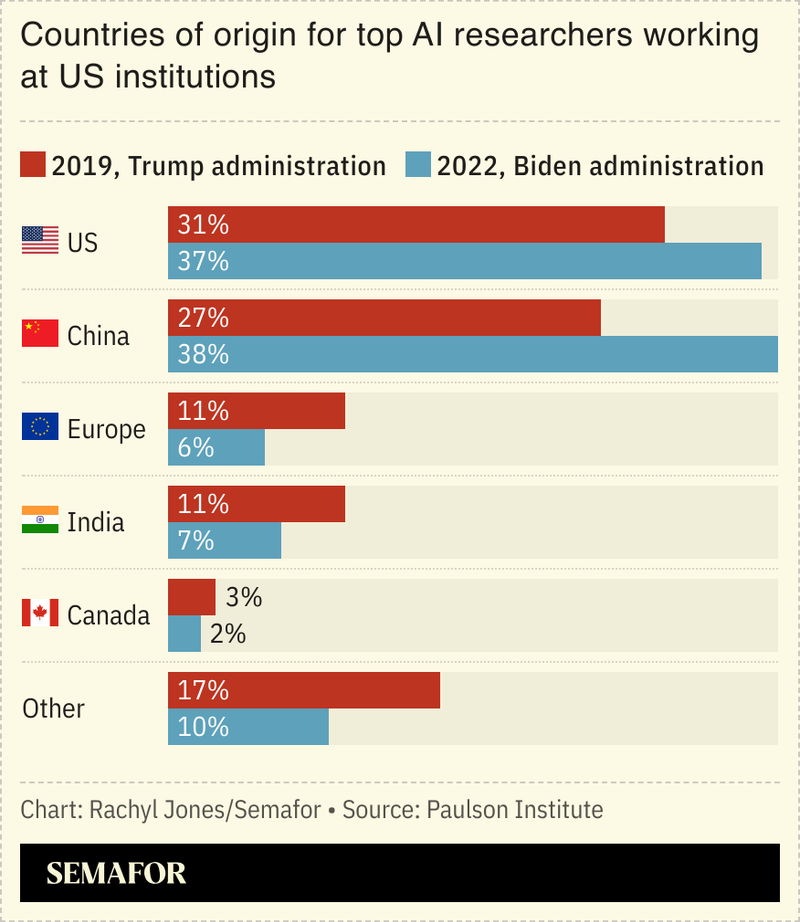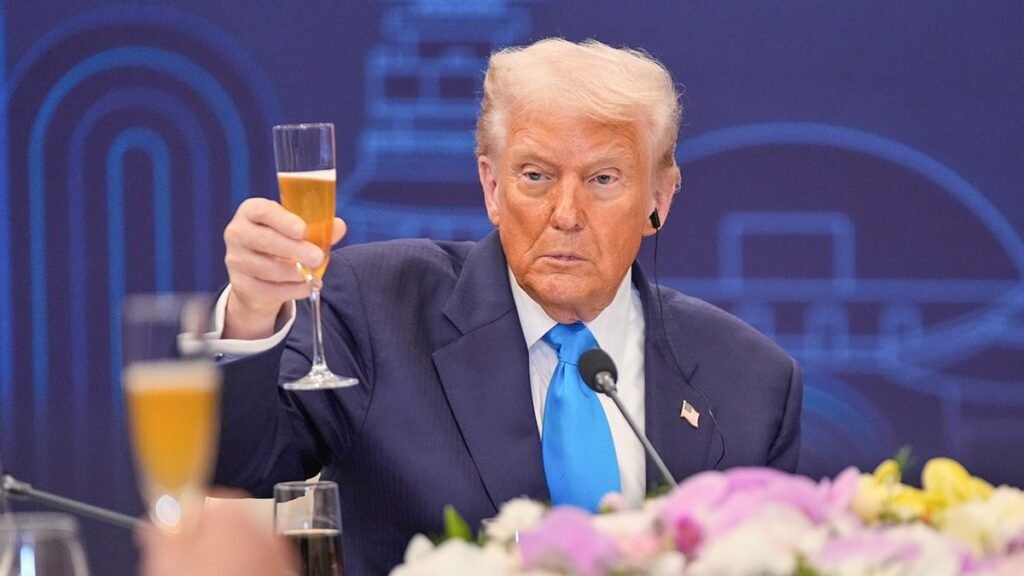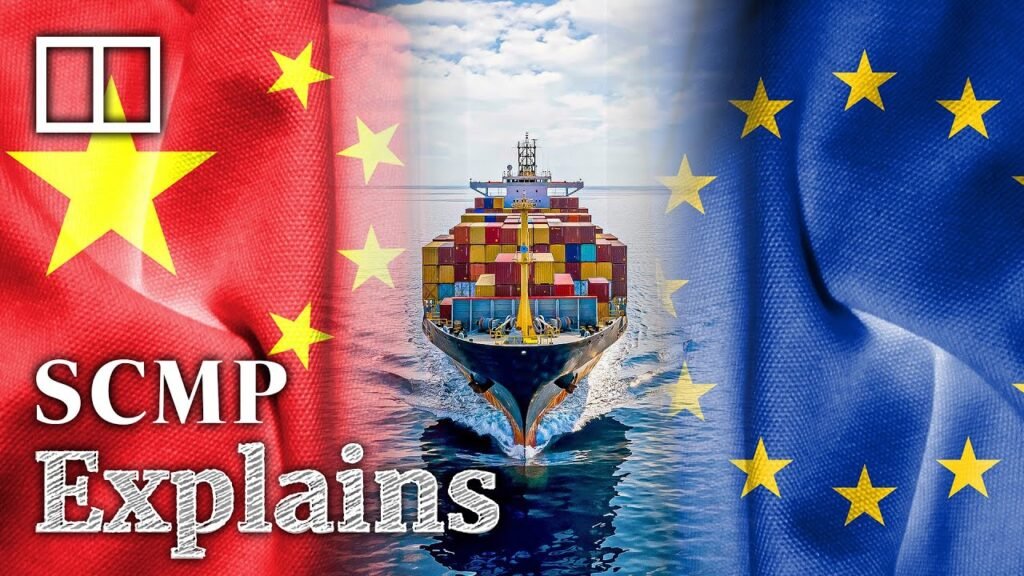Gyeongju, South Korea – Presidents Donald Trump and Xi Jinping’s first face-to-face meeting since 2019 is expected to produce a deal to lower trade tensions between the United States and China.
But while Trump and Xi will be representing Washington and Beijing on Thursday, whatever they agree to on the sidelines of the Asia-Pacific Economic Cooperation (APEC) summit in South Korea will have ramifications for the entire global economy.
Recommended Stories
list of 4 itemsend of list
As the world’s two largest economies, the US and China are unmatched in their influence on global stability and prosperity.
Together, they account for 43 percent of global gross domestic product (GDP) and nearly half of global manufacturing output.
Their two-way trade came to some $585bn in 2024 alone.
A full-blown US-China trade war or decoupling would almost certainly have a severe negative impact on global economic growth.
The World Trade Organization has estimated that the division of the world into two economic blocs pulled between the US and China would reduce global GDP by nearly 7 percent over the long term.
“The US-China relationship is the most important bilateral relationship,” said Heiwai Tang, director of the Asia Global Institute in Hong Kong.
“Any de-escalation in their tension will have significant implications for themselves and more so for smaller economies that rely on trade with either of the superpowers,” Tang told Al Jazeera.
“The question is how long the agreements, whether it’s about China’s purchasing more soybeans or the US lowering tariffs on China, can last.”

After months of back-and-forth trade salvoes between Washington and Bejing, Trump and Xi’s summit on Thursday comes on the heels of mutual threats to sharply escalate their confrontation.
Beijing earlier this month announced plans to impose strict export controls on rare earths, crucial for manufacturing everything from smartphones to fighter jets, prompting fears of massive disruption to global supply chains.
Trump, in response, threatened to impose an additional 100 percent tariff on Chinese goods, raising the prospect of an effective trade embargo between the two sides.
The measures are considered so economically disruptive by economists that they have been widely seen as tools to gain leverage in the trade negotiations as much, or more so, than statements of intent.
“If enforced, they would have devastating effects on the global economy – and could easily backfire on their own economies,” said Henry Gao, an expert in international trade at Singapore Management University.
“That’s why I’ve always maintained that these tools will be brandished, not deployed, to pressure the other side back to the negotiating table.”
In the lead-up to the summit, US officials have indicated that Trump and Xi will seek to avoid further escalation.
US Treasury Secretary Scott Bessent said in media interviews this week that he expected the sides to agree to defer China’s export controls and the higher US tariffs.
“De-escalating the trade war, and perhaps even more important, the tech war, is of huge importance for the world economy, which got terribly hit by the shocks and the uncertainty triggered by the US president after April 2,” Rolf J Langhammer, a researcher at the Kiel Institute for the World Economy in Germany, told Al Jazeera, referring to Trump’s “liberation day” announcement of steep tariffs for almost all US trade partners.
“It could, at least for the time being, stabilise expectations and thus motivate investors to take a medium-term perspective for their decisions rather than delaying them due to fears of further overnight shocks.”
While US-China conflict has led to a sharp decline in their trade – with exporters diversifying into Southeast Asia, Latin America, Europe and Africa – the global economy has until now emerged relatively unscathed.

The International Monetary Fund (IMF) earlier this month lifted its GDP growth forecast for 2025 to 3.2 percent, up from 2.8 percent in April, when Trump unveiled his “liberation day” tariffs, most of which have since been delayed or substantially lowered.
The outlook could change dramatically if the US and China cannot find a way to manage – if not resolve outright – their differences.
While Trump and Xi are expected to lower the temperature in their countries’ rivalry for the time being, expectations are low that Washington and Beijing will put their confrontation to rest over the longer term.
Jacob Gunter, an analyst at the Mercator Institute for China Studies in Berlin, said that after decades of the US benefitting from cheap Chinese goods and China receiving US technology and capital in return, the fundamental incompatibility of the two superpowers’ economic models had become impossible to ignore.
“These irreconcilable differences exist,” Gunter told Al Jazeera.
Gunter said it was difficult to imagine China abandoning its export-oriented model of state-led investment, or the US opening up fully to Chinese imports and lifting its controls on Chinese technology.
“I just don’t see any deal that would be sufficient enough to meet the interests and values of both parties that wouldn’t come at the expense of the other party,” he said.

